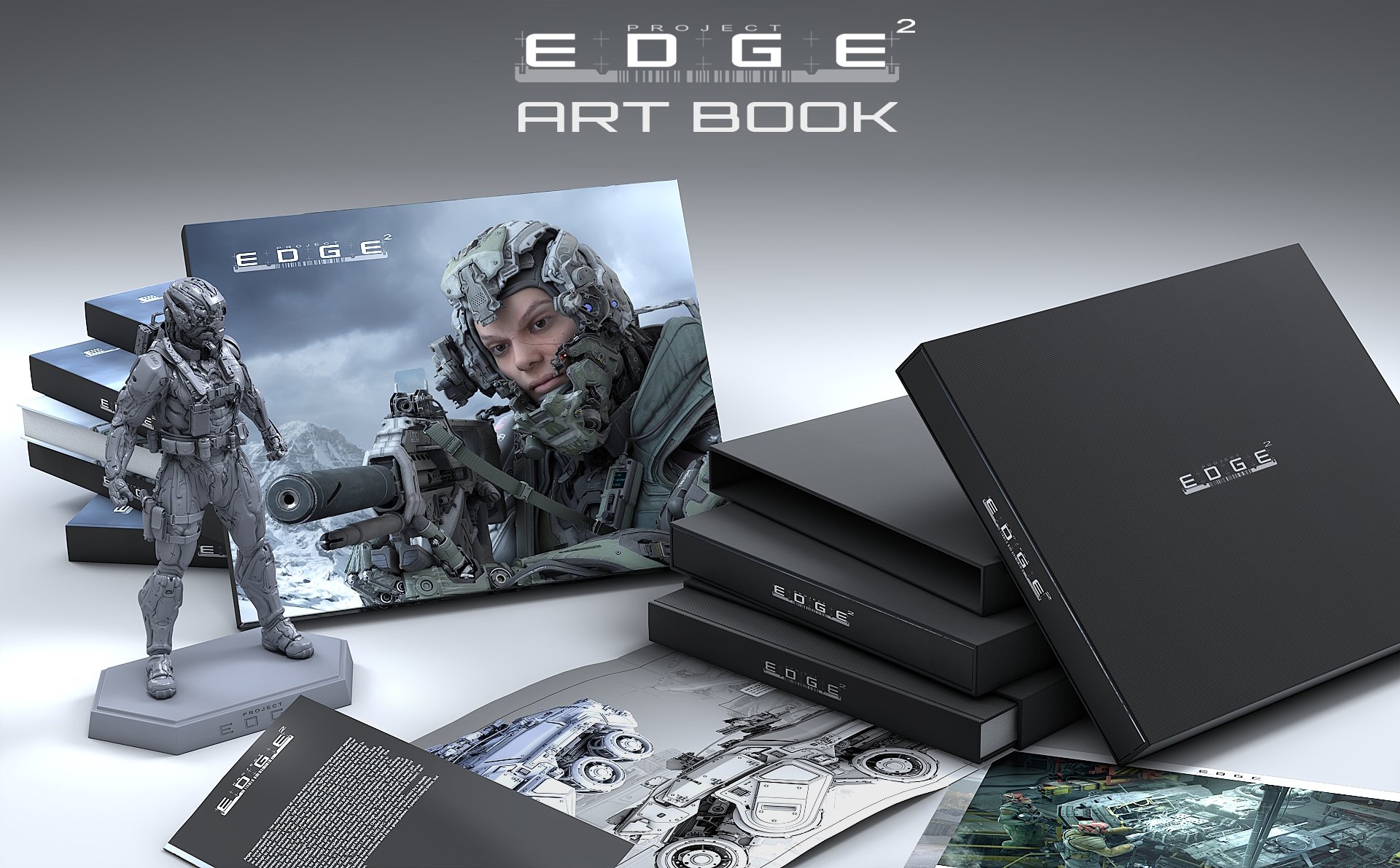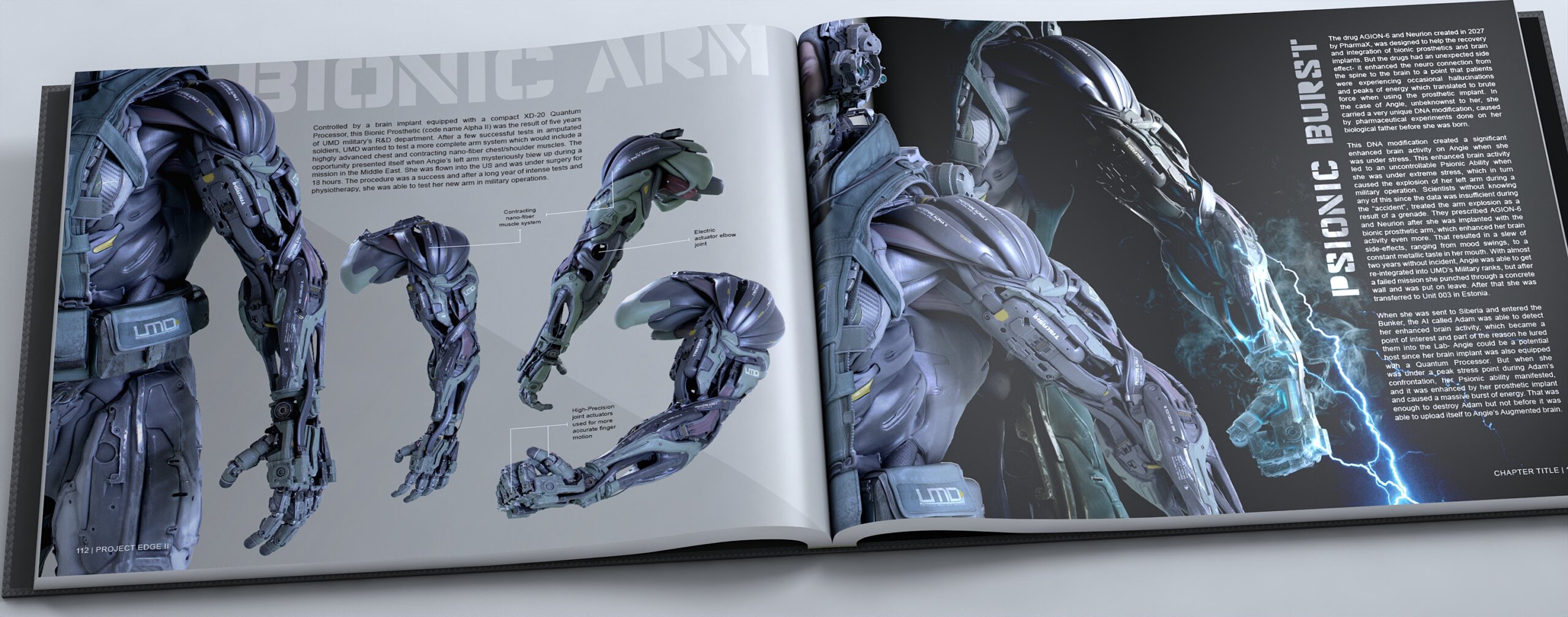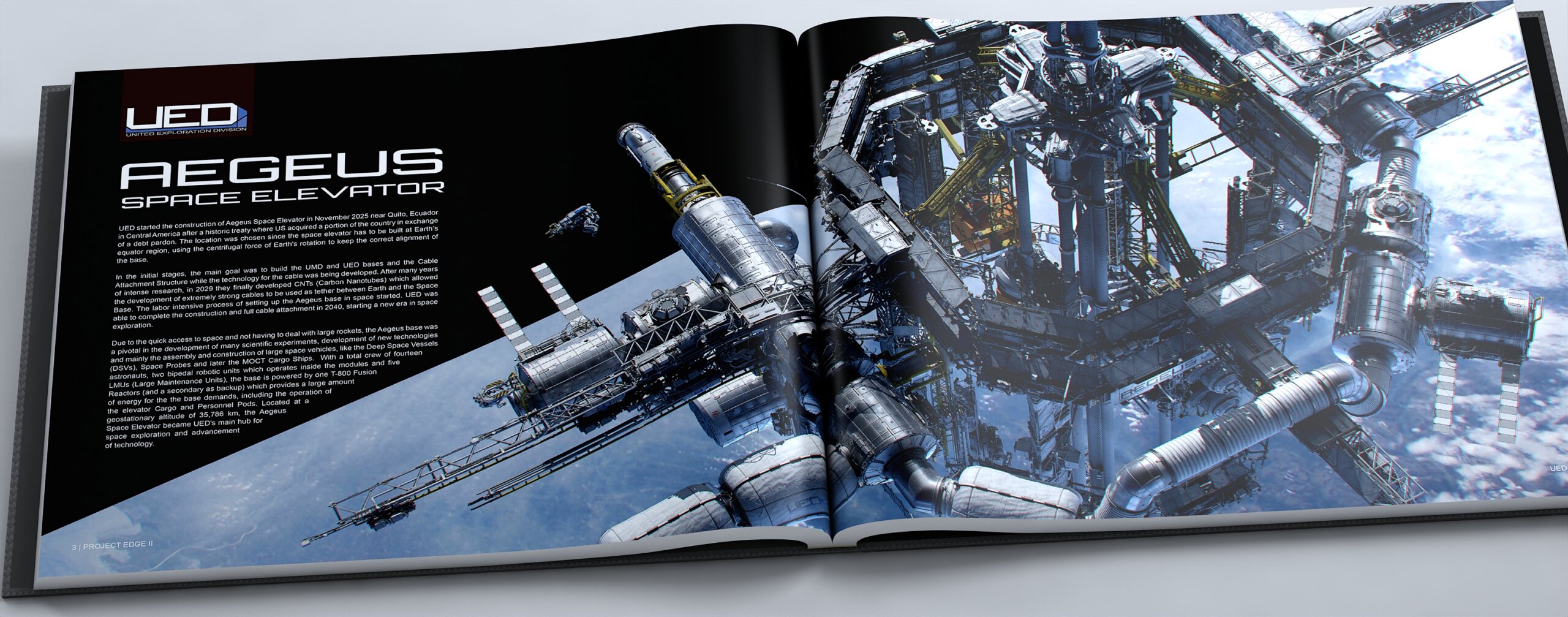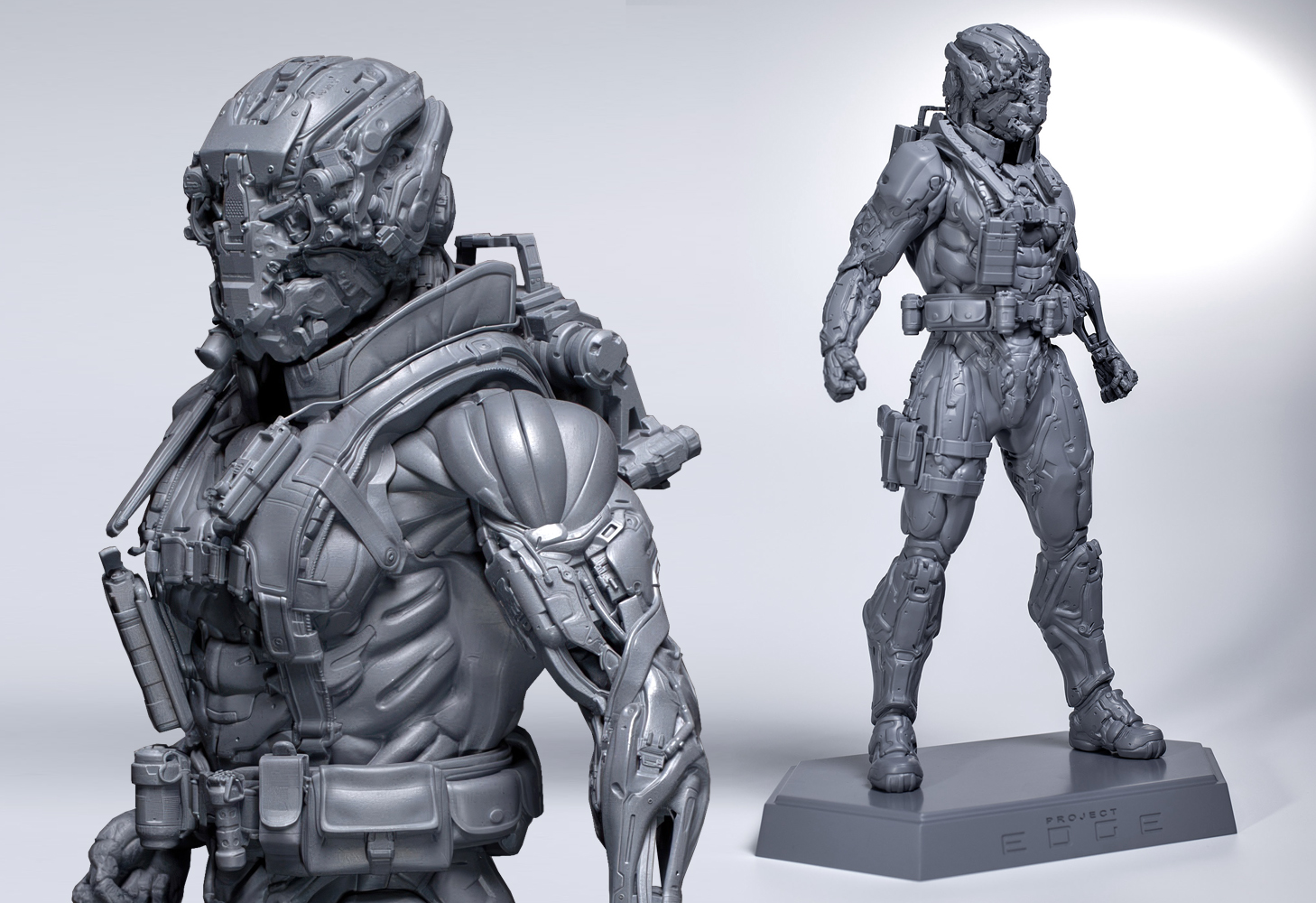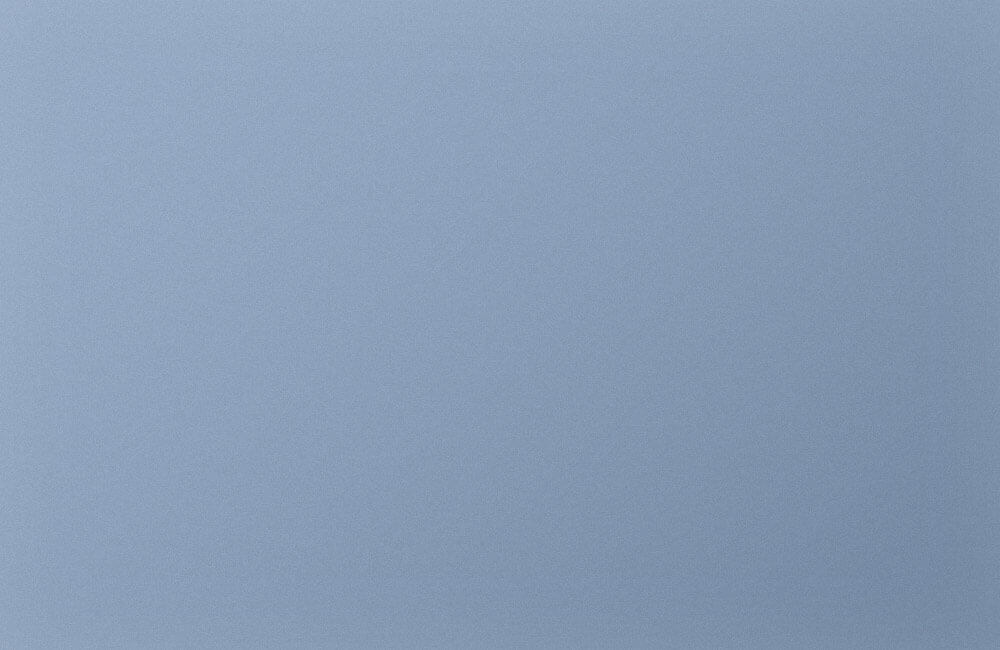
Fausto de Martini is creative in the essential meaning of the word.
His imagination never rests, giving birth to machines and creatures, characters and worlds that his art transforms into visuals.
We at Kstudio are happy to list Fausto among our customers, and thankful for the chance to interview him about his work, dreams and experiences.
Where are you originally from and how did you get involved in 3D and Concept Design?
I’m originally from Sao Paulo, Brazil.
I grew up a sci-fi fan and had the amazing opportunity to grow up watching the advancement of computers since my brother worked in computer companies since he was a teenager, and he was always bringing the computers to test.
So, from the first Macintosh, Pong, first PC all the way to when Windows OS became more popular.
He was also a Star Wars fan, had the books at home, and when he brought one of the first VHS players with the Star Wars movie, I fell in love.
My sister took me to watch Empires Strike Back when I was five years old, so in many ways my family planted the seeds of science fiction and movies in my brain.
I also remember vividly when I watched RoboCop and Aliens on the same afternoon at a friend’s house, and those movies had a huge impact on me.
Fast forward, I was working as a co-editor for a small Computer Game magazine in Sao Paulo during my college years (which was Marketing and Advertisement) that I was introduced to 3D when the person that created the CD with the game demos showed what he did at his house. He was also a programmer, and we decided to create a simple video game together. After he helped me install 3DSMax 2.5 and I started to play with it, I was hooked. In some way I knew that would be my future career.
I worked for many years in the postproduction for VFX companies in Brazil, which at the time did mostly CG for TV commercials. But my passion lay in the Entertainment Industry, especially in the US, and then I got the opportunity to come here and work for video games. I was always creating my own designs and characters in my spare time, since I have always been passionate about world building and felt that I had to do my own projects to not only practice design skills but to keep the passion for art alive. I got the opportunity to work on Transformers 4 after a while and I decided to work full time as a freelance concept artist in film.
When you saw the first Avatar film, you dreamed of working on its sequel and this dream came true.
Do you have dreams like those now, a “dream project” that you’d love to work on someday?
Working on the Avatar Sequels was a dream come true. James Cameron has inspired me since I watched Aliens, and in some ways my style gravitated towards the style of his movies.
Also, the Art Department had one of the most talented groups of artists I have ever worked with, so it was an inspiring and humbling experience.
With all that said, the next “dream project” for me would be working on my own IP, such as developing Project EDGE into something bigger.
You started working as a Concept Artist in films and left your mark on such blockbusters
as remade Robocop, Independence Day II, Star Wars, Avatar, and others.
Do you ever feel like changing industries?
I really love working in the film industry and I was truly fortunate to have worked on so many fun and visually challenging projects. I also worked for a robotic company designing robotic prototypes along with their engineering team, and I learned so much in the process. I would leave the film industry if I had an opportunity to work on Project EDGE or another IP of my own creation.
You worked on some iconic details of the Avengers films, like Hawkeye’s equipment and the all-powerful Infinity Gauntlet.
Superhero films have been on the rise in recent years. Have you got any favorites among them – the heroes, the stories, and the cinematics?
I certainly do. My all-time favorite Marvel movie is the Guardian of the Galaxy trilogy.
I thought this franchise, under the director James Gunn, was a breath of fresh air and presented us with amazing characters, really well written stories and dialogs.
They also created a unique style of costumes and tech, which is easily recognizable.
I felt very honored when I had the opportunity to design the Guardians of the Galaxy 3 new ship, called Bowie.
It was an intense process but fortunately we arrived at a design the director was very happy with, which you see in the movie:
In the Star Wars sequels, you reimagined the Tie Fighters.
Did it feel pressure or inspiration – working on the visuals that millions of Star War fans know and love?
What’s your favorite Star Wars film or show?
I felt a lot of pressure working on the Tie Fighters, since it is such an iconic design and loved by many fans. I ended up doing many rounds of design where I pushed in different directions with different wing designs, but the director preferred something very close to the original.
So, I never say I “designed” the new Tie Fighter, since it was designed by the brilliant Colin Cantwell (inspired by George Lucas’ napkin sketch) and Joe Johnston, which added all the amazing details you see in the Star Wars movies. So, I always say that I “added some cosmetic changes” to the original design.My favorite Star Wars movie is Empire Strikes Back. I think they really pushed the quality and storytelling in the second film, and that whole sequence with the AT-AT Walkers in the snow… it was all done in 1980!!! Still holds up and looks awesome.
The Transformers was another beloved franchise that you got to work on, designing the ship and weapons of the deadly mercenary Lockdown.
How did you get this opportunity?
I was very lucky that the Production Designer Jeffrey Beecroft found my concept design blog, when blogs were still a thing.
My blog had only my personal works, like robots and creatures I have been designing in my spare time. I guess he liked some of them and contacted me.
I also had done quite a bit of concept work on the RoboCop reboot and one of the Art Directors knew my name from the project.
I had a meeting with Jeffrey and decided to start working in film full-time at that point.
Terminator Genisys felt like a very caring and loving tribute to the original films.How did it feel to work on it?
It was awesome to work on Terminator Genisys. Although I didn’t design any of the T-800 robots, I designed the Aerial Drone and Spider Robot, which was an awesome experience. To use very reflective materials and specific design language that fit the franchise was challenging but fun.
And then Terminator Dark Fate brought a whole new idea for the Terminator franchise, where the liquid metal was combined with a solid endoskeleton. You helped create the design, can you tell us a bit about the process?
I was very fortunate to work a second time in such an iconic franchise. I worked on a few versions of the Rev-9 design and at the same time, the director had a team of designers developing a few versions as well.
The final design was a combination of this effort so it was a great collaboration process!
Is working on indie projects, like Kill Command, different from dealing with big franchises?
It was different since there were less people deciding on the visuals.
I was communicating with the VFX Supervisor which also worked as the Production Designer, so it was awesome to have such a direct decision into what the designs will look like.
We arrived quickly at the results, and he also gave me quite a bit of freedom when designing the robots.
What were the greatest challenges that you faced while working on those films? How did you manage to deal with them?
I was very fortunate to work with incredible artists, Production Designers and Directors. But the greatest challenges came from the volume of work that some projects demanded.
But it was very helpful to learn to cut corners and get to the final result quickly, which helped me when I applied the same techniques to my personal work.
How do you manage your work? What stages are there as you progress from beginning to the completion of the project?
For my personal work I usually start with loose sketches on paper, trying to come up with a few silhouette versions before going into 3D.
For freelance work, I generally start in 3D with low poly block outs to figure out overall proportions and silhouette ideas to show the Production Designer.
Once the PD and Director chose a design, I added all the necessary details, shaders and textures, all to make it look like a completed design.
What was the best work experience in your career?
I have a few favorites: The first movie I worked on, RoboCop reboot since it was my first experience doing 3D designs for a film. I learned a lot during this project and shaped my pipeline to be able to iterate quickly in 3D to accommodate the notes coming from PDs and Directors.
Another big one is the Avatar Sequels. Cameron is a genius, I grew up on Aliens, Terminator, The Abyss, and it was great to work with him. Plus, the experience working with the whole Art Department, which had one of the best groups of artists I ever worked with.
Another one was Netflix’s movie Atlas. I started on that project in 2017 doing a few explorations designs then when it went into full production, I ended up doing quite a bit of the designs that you see in the movie, and working with Brad Peyton was great.
How do you prepare the materials and textures for the models? Do you create new textures for your work?
I have been creating and saving V-Ray shaders since I started working as a freelance concept artist, so at this point I have a library with hundreds of shaders, separated by type, like anodized metal, composite materials, plastic, cloth, wood, etc.
I use some procedural techniques applying a Vray dirt on blend materials to accentuate crevices and edges and using tileable maps.
That allows me to quickly get to a result where it looks like I unwrapped UVs and textured everything, but in fact is all Box, Cylindrical, Planar UVW Map modifier and these shaders.
What’s the final appearance of the models when you finish working on them?
Do you work on some nuances after you pass the finished models to the next stage?
I usually add as much detail in 3d as possible, especially since that allows me to render multiple angles.
There are some rare cases where I do 2d passes on Photoshop to explore decals and part lines, but generally I have to apply them back in 3D after it gets approved.
How does the animation process of the models happen? Is it something done by you, or is it a team effort?
How does it affect the final appearance of the models?
The final animations are all done by the talented team of various VFX houses (they are the heroes that really make the movies look amazing, taking our designs to the next level), but I tend to design thinking of range of motion and functionality as much as possible since that affects the design directly.
So, I do simple setups using forward kinematics (linking objects to dummies, etc.) and sometimes using biped in the case of a robot for example which helps inform the animators of how the vehicle or machine works.
Guardians of the Galaxy Vol. 3
Some tests I did to show the functionality of the Guardians of the Galaxy 3 “Bowie” ship maneuvering system and how the two small ships detach from the front of it
Do you work on scenes where the machines are destroyed? This part seems just incredible. Does it require teamwork?
In some cases, I do. As an example, the Avatar 2 movie had quite a bit of destroyed machines toward the end of the movie, like vehicles and structural parts of the Sea Dragon (the large ship that hunts the Tulkuns), but usually it’s a guide for the VFX teams, I don’t work on the final destruction shots.
What programs and technologies do you use to create 3D models and animations?
Did you develop some helpful approaches while working on your projects?
I use 3DSMax and Vray as my main 3D packages, but ZBrush and Solidworks are very important in my pipeline.
Solidworks is very helpful when I have to design very complex mechanical surfaces since the CAD modeling allows for intersecting chamfers, bevels and other things that are a bit more difficult to model using polygons.
ZBrush sculpting tools are very helpful for suits, some mechanical details and organic models, like human faces, creatures and my favorite topic, aliens.
How helpful is Project Manager in your work? In which projects did you use it, and where did it show the best results?
Project Manager became a key part of my creative process. I started to use it in 2012, when I became a full-time freelance concept artist in movies.
I have been building a library of parts such as hydraulic pistons, joints, structural details, etc. which allows me to quickly dress designs and not have to “re-invent the wheel” for some details.
Because of this, Project Manager is very useful in pretty much anything I work on, since I can quickly browse my model library and find parts that I need.
For example, the robots in Kill Command required quite of bit of mechanical parts, and I had to deliver the designs very quickly, so Project Manager was a key part of the process!
What inspires you to create the designs for the films you work on? Did any real-life mechanisms provide inspiration?
I draw my inspiration mostly from real-world designs, especially construction equipment. I think the research is key and keeping a large number of references is very important to analyze how machines work, the purpose of their designs, etc.
How do you provide the futuristic look to the mechanisms you design while making them look realistic and functional at the same time?
Do you consult engineers or other specialists?
I studied how real machines work, buying books and watching YouTube videos of vehicles and robotic engineering.
Also, having worked for a robotic company as a designer really helped me to understand how engineers work to create effective designs built for specific purposes.
Do you sometimes look back at your early works, and compare them with what you’re doing today?
Constantly… I have a hard time linking my work for more than a few weeks. After that I start picking apart and looking at all the flaws.
So, looking at old works is a bit harder, but I’m glad I made some progress over the years.
What advice would you give to the many young and beginning specialists who’ll be reading this interview?
What main steps would you recommend in their professional development?
What deserves special attention, what life-changing steps are necessary to go as far as you managed?
With the emerging technologies we are witnessing it might be discouraging to some artists, but I believe we must work hard and strengthen our skills. Fundamental knowledge such as basic drawing skills is always very helpful and looking at how real machines/vehicles/robots are assembled and how they work is key. In the case of creature design, studying real anatomy to understand bone structures, how muscles overlap, etc., is very important. But then, to apply that, you should learn a 3D application to be able to apply your design knowledge and think “in 3D” versus staying in the 2d space.
Also, I can see tools getting faster so I highly recommend investing time to learn some storytelling techniques and start thinking larger, like creation of worlds, characters, and so on, so you can become a “world builder” versus an “asset builder”.
How did you come up with the idea of Project EDGE? What was your goal? What was the most fun thing about making it?
I came up with that when I felt that doing so many personal projects without connection to each other was fun, but I should invest my time in creating something bigger.
So, I started to write some basic outlines of a near-future reality, where political powers in the world shifted and space military became a focus. Also, large robotic corporations started to race against each other to create more advanced robots and Quantum Processing chips running powerful AI software, so in the world of Project EDGE robots are already a part of the daily life and creating tensions with job replacement and military use.
Let’s talk about Project EDGE 2 Art Book. When did you decide to make it?
How different is the finished version from what you had planned in the beginning?
Did you manage to put everything that you wanted in the art book?
To establish the world of EDGE I released an e-book in 2015. It was small with only 60 pages, but it was enough to give the readers a glimpse of the world and different factions. Then right after I released Project EDGE 2, I started to work on the second book… and I wanted to tell the story of a small group of special operation soldiers that are dropped into a mission in Siberia to retrieve a Data Drive and realize they became part of a larger and dangerous mission.
After finishing the story, called “Into the Darkness”, with two other writers I started to work hard to developing the characters, vehicles and all the environments in which the mission takes place, I started to work on the space designs, which is an expansion of the EDGE universe where humans begin to establish bases in Mars after building a large Space Elevator that serves as a space port, where the assembly of spaceships and various kinds of researches take place.
Here is a teaser to announce the Art Book Illustrated Story, which is called “Into the Darkness”
Project EDGE 2 Kickstarter CampaignI planned initially to make a 152-page book, but it was not enough to tell the story and display the designs I created for this second installment, so the book now is 304 pages.
Because of the double number of pages and the fact the book is 14”x11” (35.5cm x 28”) and costs of printing skyrocketed after 2020, I had to create a campaign on Kickstarter to help complete the money I saved for the printing and shipping of the book.
I’m also offering a limited edition 11” (28cm) statue of the Into the Darkness story’s main character, beautifully printed by Ownage Industries. You can access the Kickstarter campaign here to check it out:
Project EDGE 2
Looks like a render but is an actual photograph of the 3D printed character
About the interviewer:
Semen Tsevelev is a journalist from Odesa, Ukraine, who likes to write about art, films, and the issues of modern society.
 Translate
Translate























